1. Gene expression
1.1. Transcription
1.1.1. promotors
1.1.2. 3' to 5' prime
1.1.3. RNA polymerase
1.1.4. RNA coding region
1.1.5. terminator
1.1.6. mRNA does not have a promoter so it's shorter
1.2. Splicing
1.2.1. introns are removed
1.3. Translation
1.3.1. in the cytoplasm
1.3.2. tRNA anticodons --> same as original DNA
1.4. Folding of protein
2. Terminology
2.1. Gene
2.2. Genome
2.3. Chromosomes
2.4. DNA
2.5. Allele
2.5.1. homozygous
2.5.2. heterozygous
2.6. Locus
2.7. Telomere
2.8. Centromere
2.9. Mb, Kb and bb
2.10. Phenotype
2.11. Genotype
2.12. Dominant
2.13. Recessive
2.14. Pedigree
2.15. Proband
3. Human genome
3.1. 23 pairs of chromosomes
3.1.1. 22 autosomes
3.1.2. 2 sex chromosomes
3.2. The central dogma
3.2.1. Nuclear DNA
3.2.1.1. 30000 genes
3.2.1.2. only 2% coding DNA
3.2.1.3. 98% non coding
3.2.1.4. 3 billion base pairs
3.2.1.5. has exon and intron
3.2.1.6. used with evidence such as saliva, semen, and blood
3.2.1.7. for disease diagnosis take from peripheral blood
3.2.2. Mitochondrial DNA
3.2.2.1. circular piece of double-stranded DNA
3.2.2.2. Maternal inheritance
3.2.2.3. 93% coding DNA
3.2.2.4. High mutation rate
3.2.2.5. has exon only
3.2.2.6. used with evidence such as bones, hair, and teeth
3.2.2.7. for disease diagnosis take from muscles
4. Human inheritance
4.1. Pattern
4.1.1. Mendelian
4.1.1.1. Autosomal dominant
4.1.1.1.1. no skipping
4.1.1.1.2. male to male is present
4.1.1.2. autosomal recessive
4.1.1.2.1. male to male is present
4.1.1.2.2. skipping
4.1.1.3. x-linked recessive
4.1.1.3.1. Only males affected
4.1.1.3.2. Affected males relate through carriers females
4.1.1.3.3. No male to male
4.1.1.3.4. Skipping
4.1.1.4. x-linked dominant
4.1.1.4.1. no male to male
4.1.1.4.2. no skipping
4.1.1.4.3. All daughters of affected males are affected
4.1.2. Non-Mendelian
4.1.2.1. imprinting
4.1.2.2. mitochondrial
4.1.2.2.1. from the mothers only
4.1.2.3. multifactorial
4.1.2.4. sporadic
4.2. how to evaluate a pedigree
4.2.1. transmission
4.2.1.1. male to male
4.2.1.2. female to female
4.2.1.3. skipping
4.2.1.4. recessive or dominant
4.2.1.5. autosomal or x-linked
4.2.2. sex differences
4.2.3. segregation
